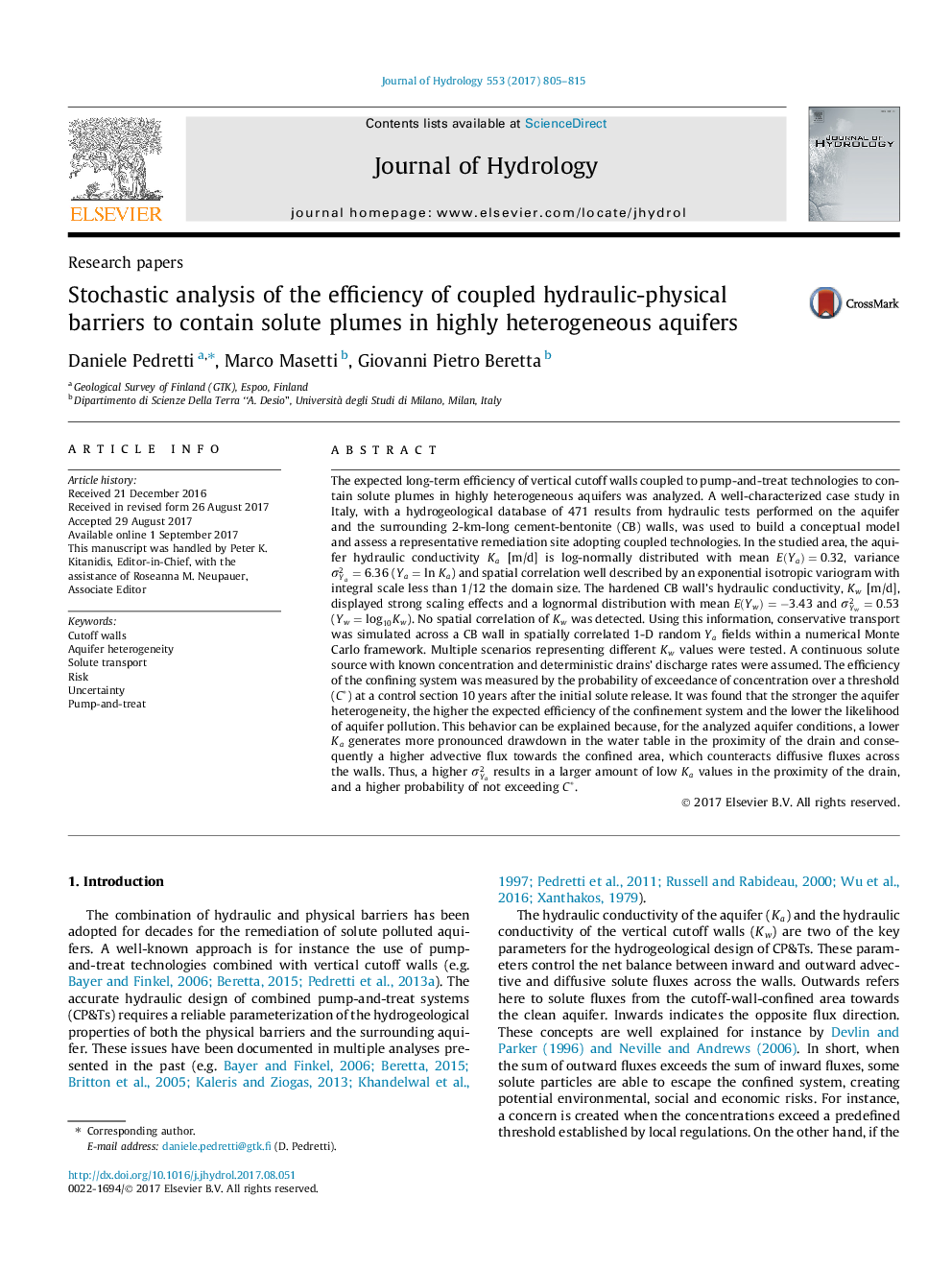| کد مقاله | کد نشریه | سال انتشار | مقاله انگلیسی | نسخه تمام متن |
|---|---|---|---|---|
| 5770857 | 1629901 | 2017 | 11 صفحه PDF | دانلود رایگان |

- Transport across cement-bentonite walls in randomly-permeable alluvial aquifers with drains.
- Representative case study with 471 hydraulic tests from historic database analyzed.
- Hydraulic variability expressed as variance of aquifer log-hydraulic conductivity (ÏYa2).
- A higher ÏYa2 increases the mean efficiency of the confinement system.
- A higher ÏYa2 increases the uncertainty regarding optimal hydraulic design of the CB walls.
The expected long-term efficiency of vertical cutoff walls coupled to pump-and-treat technologies to contain solute plumes in highly heterogeneous aquifers was analyzed. A well-characterized case study in Italy, with a hydrogeological database of 471 results from hydraulic tests performed on the aquifer and the surrounding 2-km-long cement-bentonite (CB) walls, was used to build a conceptual model and assess a representative remediation site adopting coupled technologies. In the studied area, the aquifer hydraulic conductivity Ka [m/d] is log-normally distributed with mean E(Ya)=0.32, variance ÏYa2=6.36 (Ya=lnKa) and spatial correlation well described by an exponential isotropic variogram with integral scale less than 1/12 the domain size. The hardened CB wall's hydraulic conductivity, Kw [m/d], displayed strong scaling effects and a lognormal distribution with mean E(Yw)=-3.43 and ÏYw2=0.53 (Yw=log10Kw). No spatial correlation of Kw was detected. Using this information, conservative transport was simulated across a CB wall in spatially correlated 1-D random Ya fields within a numerical Monte Carlo framework. Multiple scenarios representing different Kw values were tested. A continuous solute source with known concentration and deterministic drains' discharge rates were assumed. The efficiency of the confining system was measured by the probability of exceedance of concentration over a threshold (Câ) at a control section 10Â years after the initial solute release. It was found that the stronger the aquifer heterogeneity, the higher the expected efficiency of the confinement system and the lower the likelihood of aquifer pollution. This behavior can be explained because, for the analyzed aquifer conditions, a lower Ka generates more pronounced drawdown in the water table in the proximity of the drain and consequently a higher advective flux towards the confined area, which counteracts diffusive fluxes across the walls. Thus, a higher ÏYa2 results in a larger amount of low Ka values in the proximity of the drain, and a higher probability of not exceeding Câ.
Journal: Journal of Hydrology - Volume 553, October 2017, Pages 805-815